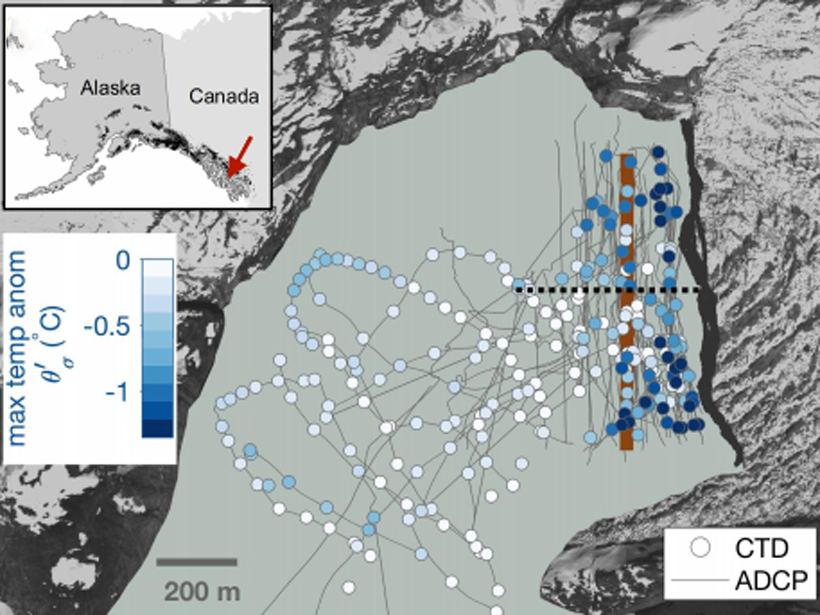Source: Geophysical Research Letters
The rate at which the ocean melts the front of tidewater glaciers is a key control on how much and how fast sea level will rise, yet for a long time we have had no observations of this process. Jackson et al. [2020] present some of the first observations of ocean melting of tidewater glaciers and shows how we might modify our theory and parameterizations to match their observations.
It is commonly assumed that melting at the glacier terminus is largely dominated by fresh meltwater coming out at a few outlets at the base of the ice front and rising quickly along the ice face, leading to vigorous melting. This study shows that melt is also strong away from these outlets of freshwater discharge, up to 100 times higher than what the standard theory predicts. As such it will likely change our estimates of ice sheet mass loss and sea level rise.
Citation: Jackson, R. H., Nash, J. D., Kienholz, C., Sutherland, D. A., Amundson, J. M., Motyka, R. J., et al. [2020]. Meltwater intrusions reveal mechanisms for rapid submarine melt at a tidewater glacier. Geophysical Research Letters, 47, e2019GL085335. https://doi.org/10.1029/2019GL085335
—Mathieu Morlighem, Editor, Geophysical Research Letters
Text © 2020. The authors. CC BY-NC-ND 3.0
Except where otherwise noted, images are subject to copyright. Any reuse without express permission from the copyright owner is prohibited.

